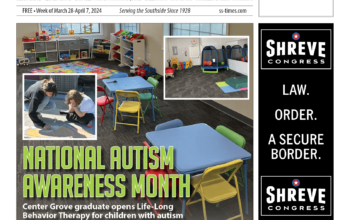By Rick Hinton
There’s a belief among various cultures that until the mortal body completely disintegrates, the soul is not fully released, waiting and biding its time. Some theorize the spirit remains behind to reconnect and “energize” with their bodies. There are also theories aligning with spirits freely choosing to frequent residences and other locations; they don’t know they’re dead and can move on. Or, perhaps they have some association to a particular location – even a cemetery – in a former capacity as employee, caretaker or director? Some souls can’t let go of their mortal shells; a vanity or longing for the way things used to be? Possibly a premature or sudden death? And, there’s the family and friend’s visitation to the cemetery (at least initially), emitting waves of emotional energy that “imprints” the ground. Could this be a cause to remain? The paranormal is a hodgepodge of theories.

In the Greenwood Cemetery, the serene and passive grounds are the final resting place for many early pioneers. The grounds are dotted with a multitude of unique and distinctive headstones: from precision replicas of tree trunks to the memorials dedicated to Ebbie and Arthur Morgan, father and son blacksmiths. The Morgan’s blacksmith shop formerly resided next to the Presbyterian Church just off Main Street and had been a gathering spot for local farmers in the day. Ebbie passed in 1961, his son Arthur in 1988. Both are buried in the newer section of the cemetery, and both have the anvils used in their trade mounted on top of their stones. The Polk family, whose entrepreneurial vision of a vegetable canning operation eventually employed a majority of Greenwood, giving the town recognition across the country, is buried in a prominent mound as you enter the cemetery.

Older cemeteries are a wealth of symbolism. Just look at the monuments and engravings from days past when gravestones were not only a dedication to a life lived, but also a work of art: the symbol of a dove – purity and peace; the willow tree – grief, sorrow and immortality; a lamb – innocence; a finger pointing upward – the soul rising to heaven; broken branches – a life cut suddenly short.
For most of the years there was a physical preamble to a funeral service, and a chore behind the scenes: graves were dug by hand. It was quite the challenge considering the sections of hard pan clay that saturate the grounds. This would explain the sometimes lapse between death and the actual burial. Before the use of burial vaults, bodies were placed in simple wooden caskets and lowered into the ground. Older cemeteries, Greenwood included, are a portrait of uneven ground – dips, sways, valleys and sunken depressions. The wooden caskets over time eventually gave way and collapsed, with the present grave visibly sunken as a result.

Is the Greenwood Cemetery haunted? Are cemetery ghosts just a good story? You must pause to remember what a powerful and sometimes unpredictable tool the human mind can be in inciting “activity: and fueling the adrenaline rush often associated with the creep factor of a cemetery in the darkness of night. Do cars traveling west on Main Street, with headlights bouncing off reflective headstones in the older section, result in a confusing configuration of shadows playing against the tree line? Yes. Does the gentle rustling of wind through these trees imitate an unworldly voice, causing us to imagine something much more ominous? Yes.
Next: the conclusion.

